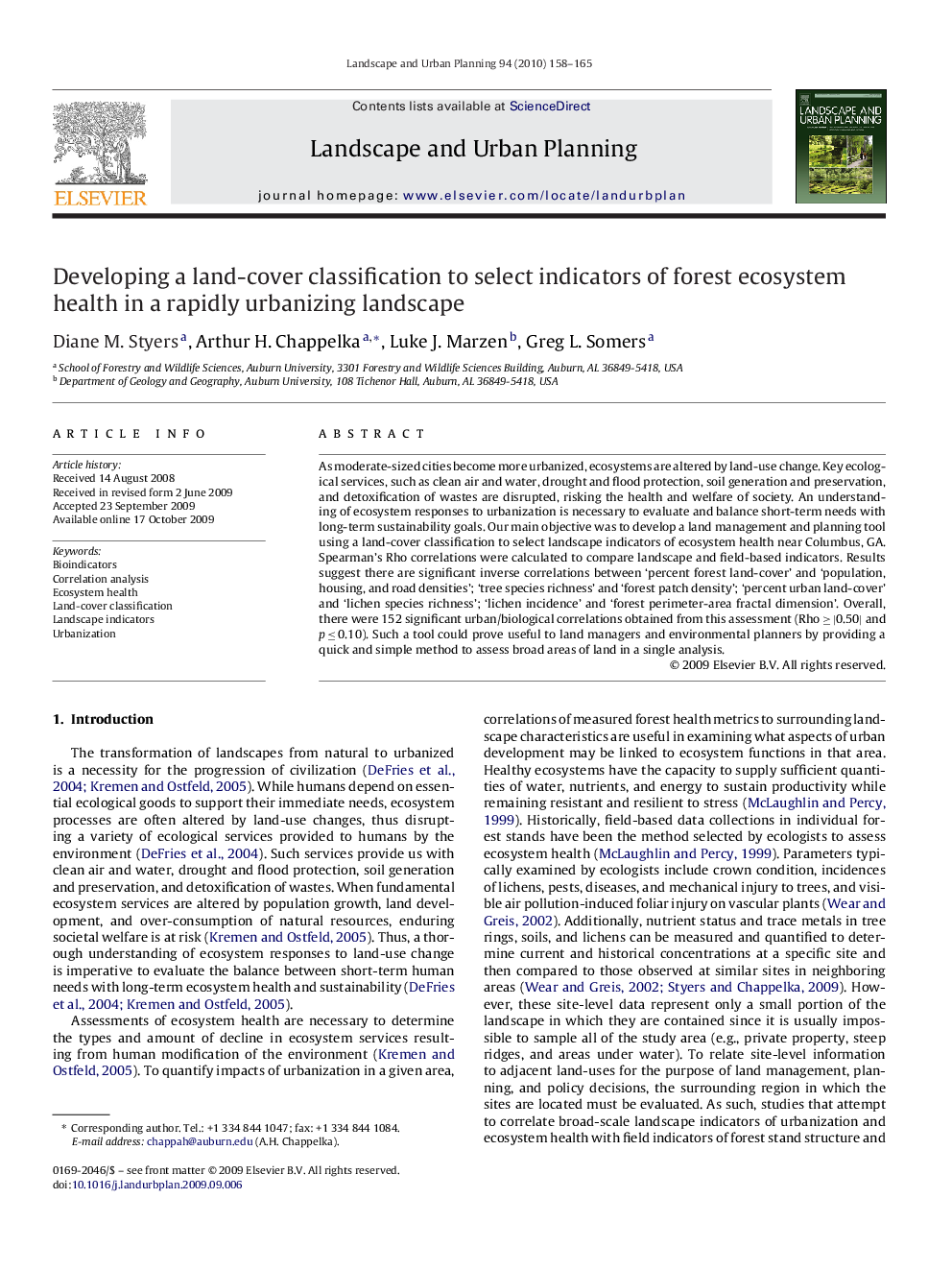| Article ID | Journal | Published Year | Pages | File Type |
|---|---|---|---|---|
| 1049809 | Landscape and Urban Planning | 2010 | 8 Pages |
As moderate-sized cities become more urbanized, ecosystems are altered by land-use change. Key ecological services, such as clean air and water, drought and flood protection, soil generation and preservation, and detoxification of wastes are disrupted, risking the health and welfare of society. An understanding of ecosystem responses to urbanization is necessary to evaluate and balance short-term needs with long-term sustainability goals. Our main objective was to develop a land management and planning tool using a land-cover classification to select landscape indicators of ecosystem health near Columbus, GA. Spearman's Rho correlations were calculated to compare landscape and field-based indicators. Results suggest there are significant inverse correlations between ‘percent forest land-cover’ and ‘population, housing, and road densities’; ‘tree species richness’ and ‘forest patch density’; ‘percent urban land-cover’ and ‘lichen species richness’; ‘lichen incidence’ and ‘forest perimeter-area fractal dimension’. Overall, there were 152 significant urban/biological correlations obtained from this assessment (Rho ≥ |0.50| and p ≤ 0.10). Such a tool could prove useful to land managers and environmental planners by providing a quick and simple method to assess broad areas of land in a single analysis.
